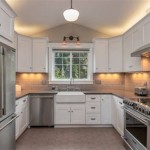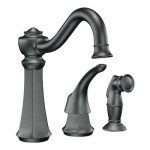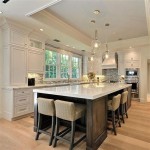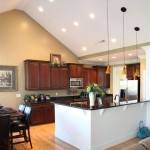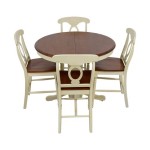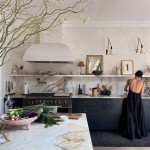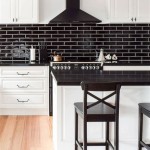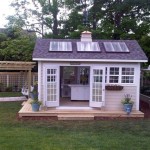Frosted Glass For Kitchen Cabinets: A Comprehensive Guide
Kitchen cabinets serve as a crucial functional and aesthetic element within the kitchen. Their design influences the overall ambiance and contributes significantly to the storage and organization of kitchen essentials. While solid cabinet doors are a standard choice, introducing frosted glass panels offers a versatile alternative that can enhance both the visual appeal and functionality of the space. This article delves into the various aspects of using frosted glass for kitchen cabinets, covering its benefits, types, design considerations, installation nuances, and maintenance requirements.
Aesthetic and Functional Advantages of Frosted Glass
Frosted glass, characterized by its translucent surface, offers a unique blend of privacy and visibility. Unlike clear glass, which allows a complete view of the cabinet's contents, frosted glass diffuses light and obscures details, creating a softer, more diffused look. This characteristic provides several advantages in the kitchen environment.
Firstly, it enhances the overall aesthetic appeal. Frosted glass adds a touch of elegance and sophistication to kitchen cabinets. The diffused light creates a subtle glow, making the cabinets appear brighter and more inviting. This can be particularly beneficial in smaller kitchens, where maximizing light is crucial. The texture of frosted glass also adds visual interest, breaking up the monotony of solid cabinet doors and creating a more dynamic and engaging space.
Secondly, frosted glass offers a degree of privacy without completely concealing the contents of the cabinets. This is particularly useful for displaying items that are frequently used but not necessarily intended to be on full display, such as everyday dishes or glassware. The frosted finish obscures the details, preventing a cluttered or disorganized appearance while still allowing for easy identification of the items stored within.
Thirdly, frosted glass can be strategically used to highlight specific elements within the kitchen design. For instance, incorporating frosted glass panels in cabinets above a countertop can draw attention to decorative items or curated collections. Conversely, using frosted glass in lower cabinets can help to conceal less visually appealing items, such as pots, pans, or cleaning supplies.
Finally, frosted glass is a durable and easy-to-maintain material. It is resistant to scratches and stains, making it suitable for the demanding environment of a kitchen. Cleaning frosted glass is generally straightforward, requiring only a mild detergent and a soft cloth.
Types of Frosted Glass and Their Applications
Frosted glass is not a monolithic material; it encompasses various techniques and finishes, each offering distinct characteristics and aesthetic effects. Understanding these different types is crucial for selecting the most appropriate option for kitchen cabinets.
Acid-Etched Glass: This type of frosted glass is produced by applying acid to the surface of the glass, creating a uniform, matte finish. The acid etching process permanently alters the surface of the glass, resulting in a durable and consistent frosting. Acid-etched glass is known for its smooth, even texture and its ability to diffuse light effectively. It is a popular choice for kitchen cabinets due to its elegant appearance and ease of maintenance.
Sandblasted Glass: Sandblasting involves using compressed air to propel abrasive particles against the surface of the glass, creating a textured, frosted finish. The intensity of the sandblasting process can be controlled to achieve varying degrees of opacity and texture. Sandblasted glass typically has a slightly rougher texture than acid-etched glass. The level of frosting can also be customized, allowing for intricate designs and patterns to be etched into the glass. Sandblasted glass is a versatile option for creating unique and personalized kitchen cabinet designs.
Frosted Glass Film: Frosted glass film is a self-adhesive film that can be applied to existing glass surfaces to create a frosted effect. This is a cost-effective alternative to replacing entire glass panels. Frosted glass film comes in a variety of patterns and textures, allowing for a wide range of design options. It is relatively easy to install and can be removed without damaging the underlying glass. However, frosted glass film may not be as durable or scratch-resistant as acid-etched or sandblasted glass. It is a suitable option for homeowners who want to achieve the look of frosted glass without incurring the expense of replacing the existing glass panels.
Decorative Frosted Glass: This category encompasses a wide range of specialized techniques used to create intricate designs and patterns on frosted glass. These techniques may involve combining acid etching, sandblasting, and other decorative elements to achieve a unique and visually stunning effect. Decorative frosted glass can be used to create focal points within the kitchen design and to add a touch of artistry to the cabinets.
The choice of frosted glass type should be based on factors such as budget, design preferences, and functional requirements. Acid-etched glass is a durable and elegant option for those seeking a uniform, matte finish. Sandblasted glass offers greater customization options and can be used to create intricate designs. Frosted glass film is a cost-effective alternative for achieving the look of frosted glass without replacing existing panels. And Decorative frosted glass is suitable for creating focal points and adding artistic touches to the kitchen space.
Design Considerations and Installation Guidelines
Integrating frosted glass into kitchen cabinets requires careful planning and execution to ensure a cohesive and visually appealing design. Several factors should be considered during the design process, including the style of the kitchen, the overall color scheme, and the desired level of privacy and visibility.
Cabinet Style: The style of the kitchen cabinets should be considered when selecting frosted glass panels. In traditional kitchens, frosted glass can be used to add a touch of elegance and sophistication to raised-panel cabinet doors. In modern kitchens, frosted glass can be incorporated into sleek, minimalist cabinet designs to create a clean and contemporary look. The style of the cabinet door, framing, and hardware should complement the frosted glass to create a harmonious and balanced design.
Color Scheme: The color scheme of the kitchen should also be taken into account when selecting frosted glass. Light-colored cabinets paired with frosted glass can create a bright and airy feel, while dark-colored cabinets with frosted glass can add a touch of drama and sophistication. The color of the frosted glass itself can also be customized to complement the overall color scheme. For example, tinted frosted glass can be used to add a subtle hint of color to the cabinets.
Placement and Proportion: The location and size of the frosted glass panels should be carefully considered. Frosted glass panels can be used in upper cabinets to display decorative items or in lower cabinets to conceal less visually appealing items. The size of the frosted glass panels should be proportionate to the size of the cabinet doors and the overall scale of the kitchen. Large frosted glass panels can create a dramatic effect, while smaller panels can add a subtle touch of elegance.
Lighting: The lighting within the kitchen can significantly impact the appearance of frosted glass. Under-cabinet lighting can be used to illuminate the frosted glass panels and create a warm and inviting glow. Interior cabinet lighting can also be used to highlight the contents of the cabinets and to add a touch of drama. The type of lighting used should be carefully selected to complement the frosted glass and to enhance the overall aesthetic of the kitchen.
Installation Process: The installation of frosted glass panels typically involves replacing existing cabinet door panels with frosted glass panels. This process may require specialized tools and expertise. It is important to ensure that the frosted glass panels are properly secured to the cabinet doors to prevent them from falling out or breaking. In some cases, it may be necessary to reinforce the cabinet doors to support the weight of the frosted glass. Professional installation is recommended to ensure that the frosted glass panels are properly installed and that the cabinets are structurally sound.
Before installing frosted glass, it is usually easier to remove the cabinet doors. Depending on how the existing panel is secured, you may need to remove screws, staples, or adhesive. It's crucial to measure accurately before cutting the frosted glass to size. Safety precautions are essential when handling glass. Always wear safety glasses and gloves. Once the frosted glass is installed, inspect for any gaps or loose fittings. Adjust as necessary to ensure a snug and secure fit.
Proper installation is crucial not only for the safety and durability of the cabinets but also for achieving the desired aesthetic effect. When executed well, frosted glass can dramatically enhance the visual appeal and functionality of a kitchen.

How To Make A Vintage Style Frosted Glass Sign Diy Kitchen Cabinet Doors Cabinets

Cabinet Glass Inserts Architectural

Reeded Frosted Glass Kitchen Cabinets Design Ideas
:strip_icc()/101769422-0148f531e90049c9a55f0a6296b9e1b7.jpg?strip=all)
Glass Front Cabinetry

Woodmark Cabinetry Glass Door Cabinets

Kitchen Cupboard Frosted Glass Thickness 4 Mm Size 700 X 1320

Frosted Glass Kitchen Cabinets Design Ideas

Cabinet Glass Kitchen Door Replacement Inserts

Blue Bar Cabinets With Frosted Glass Doors Transitional Kitchen Upper Cabinet Paint Colors

Types Of Glass You Can Use For Your Kitchen Cabinetry Hipcouch Complete Interiors Furniture

